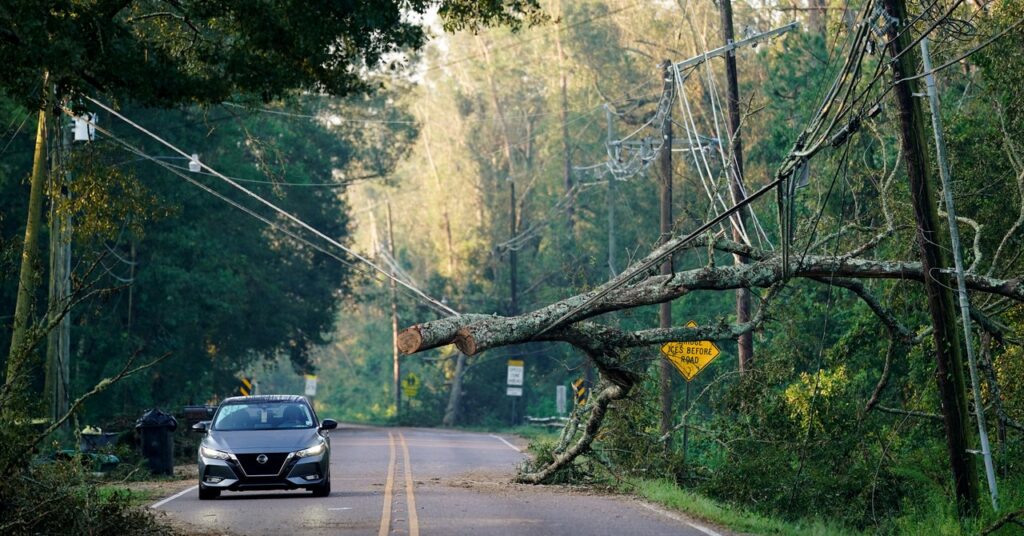Hurricanes, Solar Storms, and the Fight to Keep the Power On
This week, we look at what happened to New Orleans’ electrical grid in Ida’s wake, and we learn how a major…


LG: Obviously, pretty destructive hurricanes hit the deep South often. In your reporting, did you get a sense of how prepared the city and the people of New Orleans were for this disaster and how that preparedness may have helped in this case?
LN: Certainly, the major electric utility in the area, Entergy is very, very familiar with the recovery process in these situations, because unfortunately, they have to do it fairly often. When the rain stops and it’s the first morning that you’re looking at this destruction, the crucial thing is a very thorough reconnaissance process to make sure that Entergy and the other smaller utilities in the area fully understand what’s wrong, what are the problems with power generating stations, what are the problems on those transmission lines that we talked about, what are the problems on every inch of local power lines, and getting a picture of the system so you can then start to strategize about how you’re going to bring portions of it back up.
Having that experience from past storms allows them to do that process as efficiently as possible, though their estimate is still days to weeks. It doesn’t mean you can get this done in two days, but after Katrina, they were able to bring power back up to all buildings that could receive power. There had been such extensive damage that that wasn’t a given, but just that process took 40 days.
In subsequent hurricane recoveries, they’ve gotten it down. First it was like 30 days. Now, often, it’s about three weeks. So I think that historic track record is kind of what’s informing them saying that they hope they’ll have everybody back on in around three weeks. Many portions may come back before that. They’re trying to get everyone back as quickly as they can. And the infrastructure projects we talked about—like levies, flood walls, flood gates, pumps—all of those things are crucial, even though they’re not grid infrastructure, because when you don’t have flooding or you have much less flooding, you’re able to start the reconnaissance process much more quickly.
Otherwise, you need to wait days for the floodwaters to recede before you can even really assess. Entergy and other utilities will go out in fan boats and things to start scouting early. But obviously, you’re not going to restore electricity flow in a ton of water. I think that’s very clearly not going to work. All these things, all the infrastructure improvements contribute to helping the grid get flipped back on quicker.
I would also note, though, that there are suburbs of New Orleans and low-lying surrounding areas where those projects are still planned but haven’t been completed yet because it was such a massive effort since Hurricane Katrina to fundamentally rework the flood protections. So there are actually suburbs currently in New Orleans where there was massive flooding, and they are still needing to go through that old process of waiting for the waters to go down, scouting in boats in the meantime. So certainly, even though the success of those measures was heartening and a huge relief, the process is not done for sure.
MC: Now Lily, you said in your story that there were some new power plants, I think two new power plants in New Orleans that were designed to be somewhat hurricane-proof. What happened to those during the storm?
LN: Yeah. So Entergy has been working sort of in conjunction with the state of Louisiana, bringing on line these two new power stations, which are natural gas. They’re billed as being more efficient than other, older Entergy natural-gas power plants, and they’re meant to be cleaner and greener; at least that’s the pitch about them. The goal with natural gas, it’s very abundant in the area. It’s easier to keep online during disasters. So that’s the idea behind, OK, it’s hurricane-proof because it runs on natural gas, except as you point out, like many of the power plants in the area, those plants are either down or partly down. And so it indicates that there’s still an unresolved component here of how this resiliency plan is really going to work going forward. And it raises questions about how to improve it, for sure.




